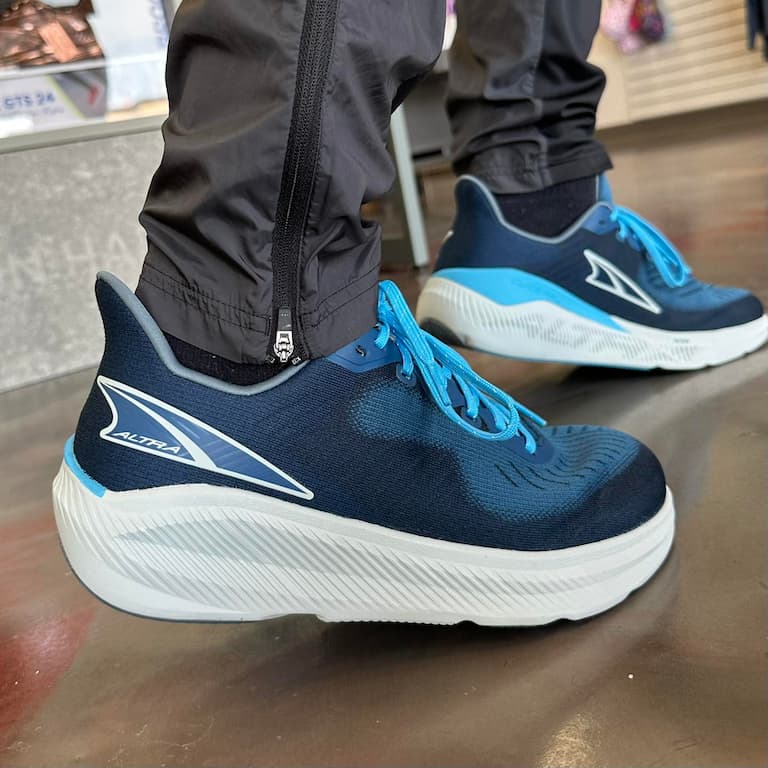Contents
If you’ve been running for a while and you’re still seeing progress, chances are you’re already on the right track. You’ve learned the importance of taking easy days, incorporating speed work once or twice a week, and building the endurance to power through long runs. But if you’re starting to feel like you’ve hit a plateau or you’re just hungry for more, it might be time to level up. You don’t need to overtrain to push past your current limits, you just need to train smarter. I’ll walk you through the key steps to elevate your performance, avoid burnout, and start unlocking your next personal best.
Choose the Right Shoes

If you want to improve your performance, choosing supportive men’s running sneakers starts to matter more than ever. Quality footwear does more than just cradle your foot. It cushions the impact of your stride, helps smooth out your landings, and gives your feet the support they need to keep going strong.
Heel cushioning, for example, is one of those features that often feels good but may not be doing as much as you think, at least when it comes to absorbing shock. Your body naturally absorbs a lot of the impact forces, and funnily enough runners sometimes strike the ground harder when wearing extra-cushy shoes.
Then there’s the front of the men’s running shoes. This is where your foot gets to work, especially during the push-off. A bit of padding up front can protect your foot from stress, but it also returns energy – some of the newer materials can help give you a little extra bounce. You want it to feel responsive without being squishy, giving you something solid to push off from with every step.
How Should Running Shoes Fit?

Finding men’s running sneakers that fit just right depends on how every part of the shoe works with your foot. From the upper, which should sit smoothly without any weird bunching or pressure points, to the ankle collar that needs to hug your heel without irritating your Achilles, every detail matters. The heel counter on running shoes for men helps with stability, cradling your foot to keep your stride steady, while the saddle (where the laces pull across your arch) should feel snug without cutting off movement.
One area people often overlook is the toe box. If it’s too tight, your toes won’t have room to splay naturally, which can cause discomfort on longer runs. Ideally, your men’s running trainers should offer you enough space to wiggle all your toes, even the pinkie. When every part of your footwear is working in harmony with your foot, you’ll feel it right away: your stride becomes smoother, more natural, and way more comfortable.
How Much Should You Run?
One of the most effective ways to get better is simply to run more, but there’s a smart way to go about it. Building mileage slowly over time is key. Your body needs time to adapt, and jumping too quickly can leave you burnt out or injured. Think of it as a long-term project rather than a quick fix. If you’ve been cruising at around 30 miles a week, it might be time to start nudging that average upward, maybe aim for 35 or even 40 miles over the next year.
The trick is to do it gradually, maybe by extending one or two easy runs a week by a mile here and there. You can also add an extra day of running if you give your body time to adjust. And don’t forget about your long run, it should challenge you beyond race distance if you want to break through performance plateaus.
Exercise Outside of Running
Some people seem naturally built to handle more training without breaking down, but much of that resilience is earned, not inherited. What you eat, how well you sleep, the way you manage stress, and how consistently you recover all play a massive role in how far your body can take you. Building muscle especially deserves a spotlight here. Lifting weights consistently and with intention helps build the durability you need to keep improving without getting sidelined. You don’t need to live in the gym, but getting your muscles firing and supporting your movements will pay off big time. Your whole body pitches in, so the stronger it is, the better you’ll perform.
Master Speed Control

Anyone can blast through the first few reps of a workout, but knowing how to stay steady from start to finish is where the real skill lies. It teaches your brain to manage effort wisely, which is exactly what you’ll need when it’s time to race. Controlled speed blends pace and endurance so that you can hold strong when it counts. Mixing in efforts like tempos or adding pace to longer sessions can help build that stamina. Just keep in mind, quality matters more than cramming in extra hard days.
Know When to Rest
Sometimes the best way to get better is by stepping back. If your energy feels high but you know your body could use a breather, swap in a low-impact activity like swimming or even a walk to keep things moving without adding strain. And it’s not always about miles. Creating space for recovery might mean making time for a massage, deep breathing, or even winding down with your favourite calming essential oils. There’s a balance between working hard and letting go, and once you find it everything starts to click. You don’t need to do it all perfectly to keep moving forward.

